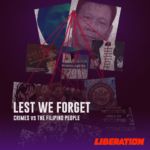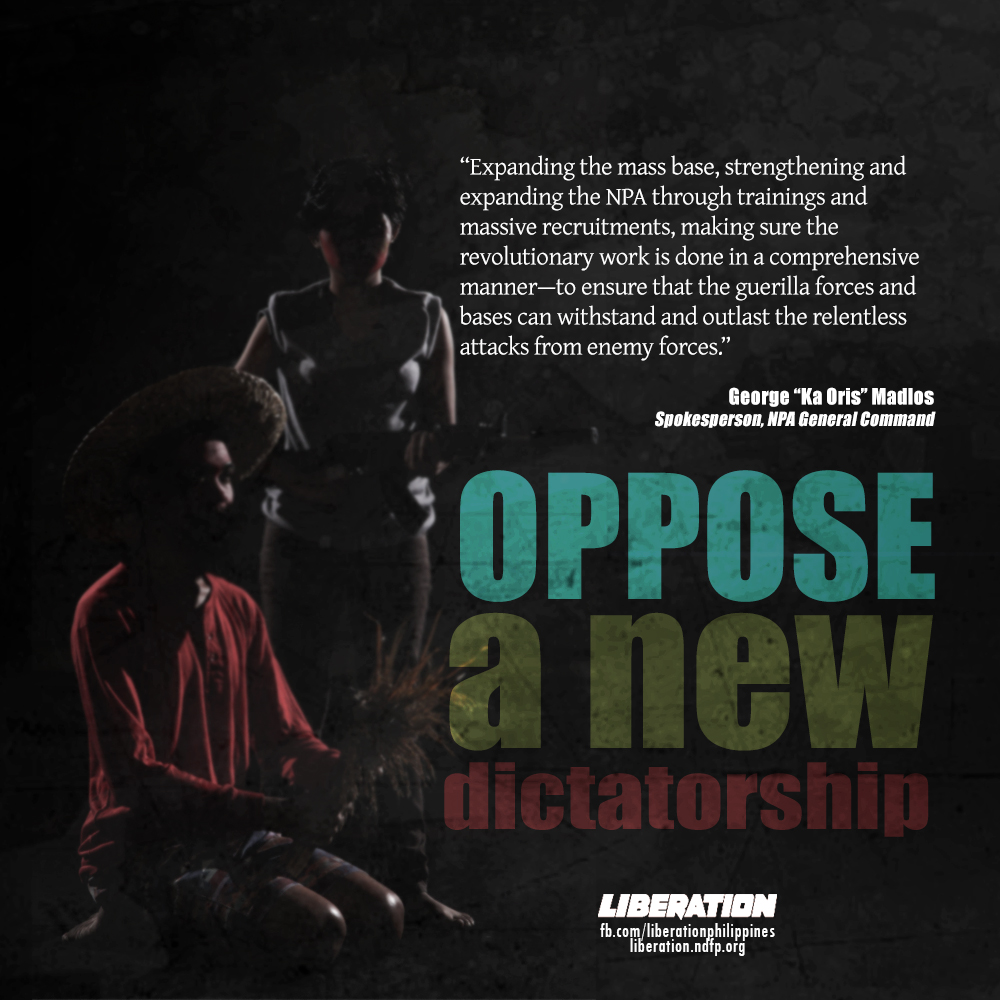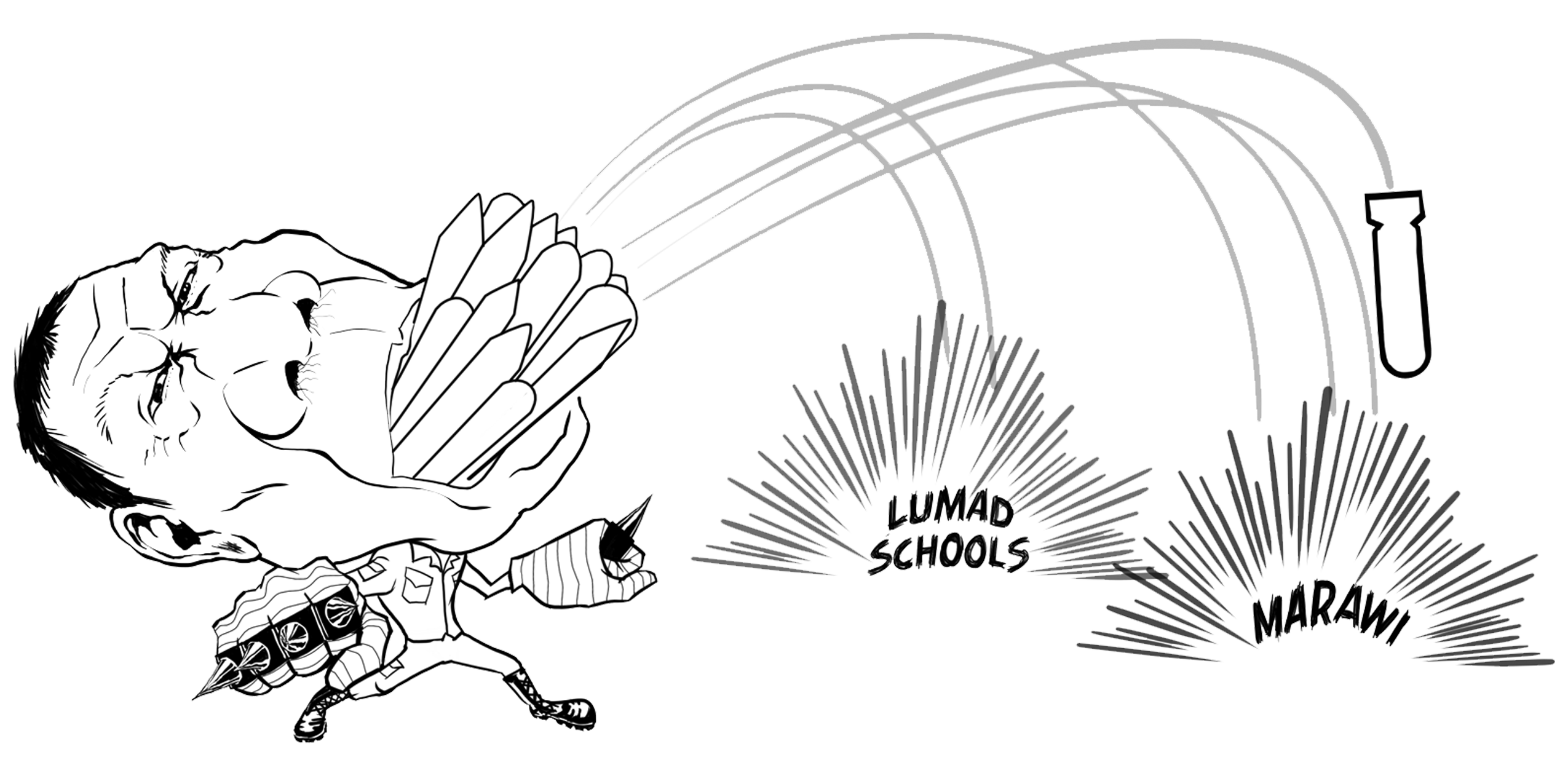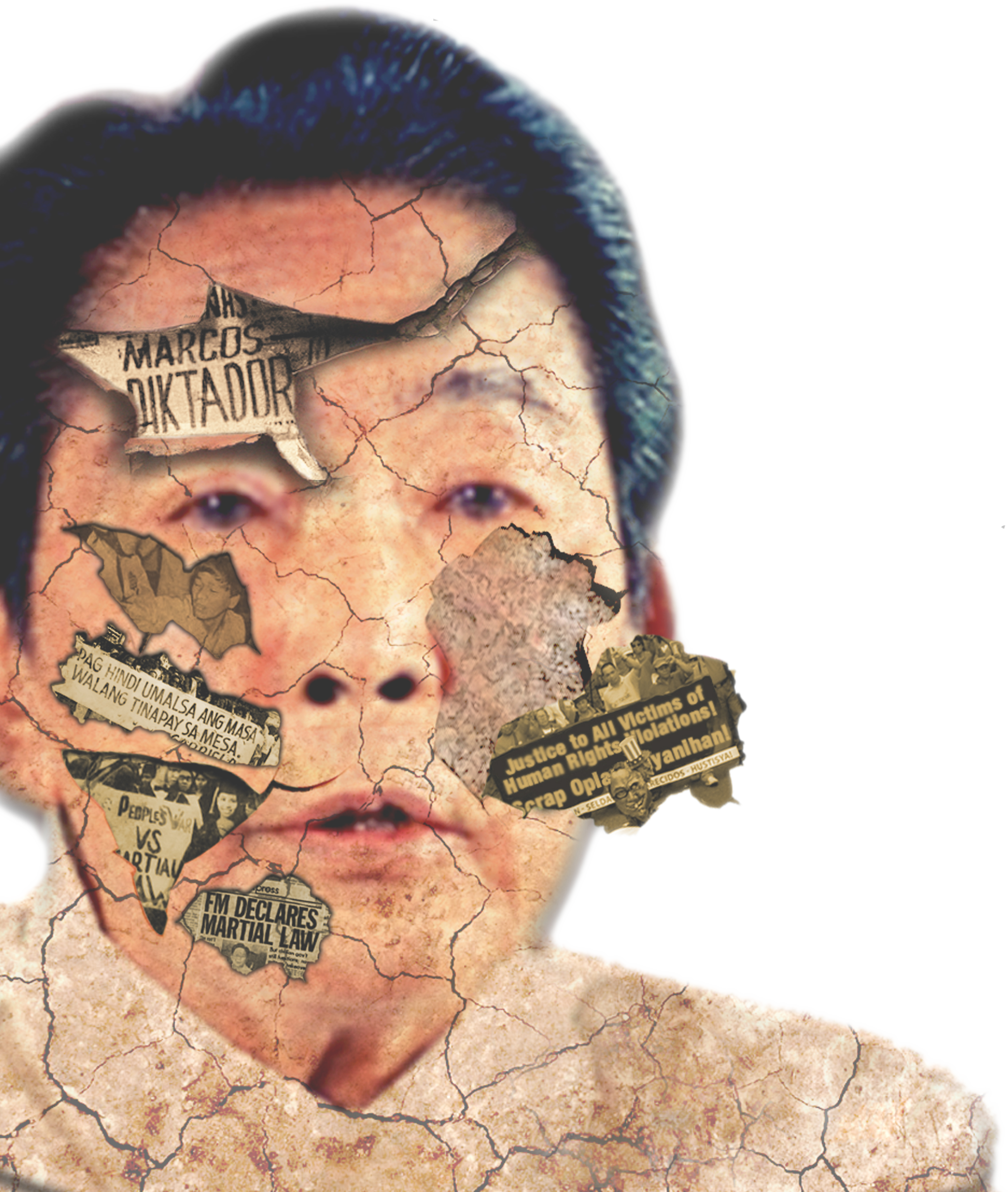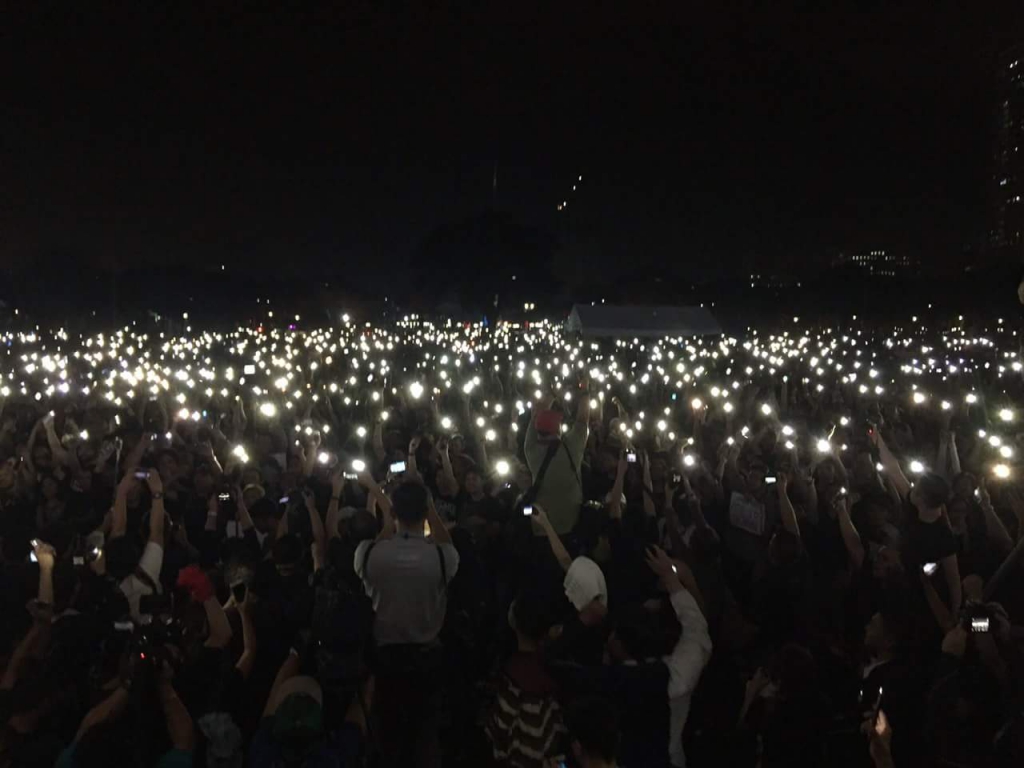STATEMENT ON THE CURRENT DRIVE OF DUTERTE TO REALIZE A FASCIST DICTATORSHIP A LA MARCOS
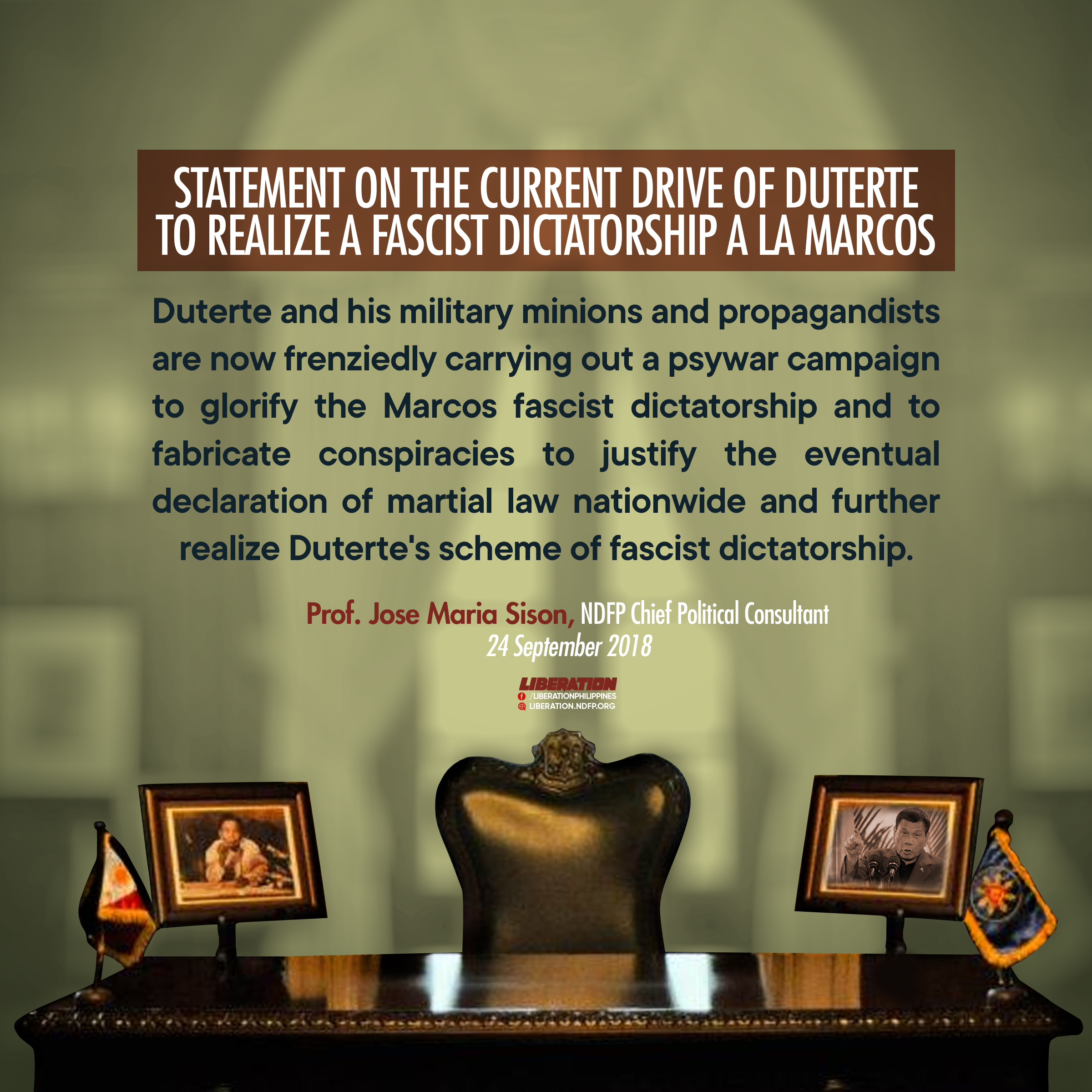
by Prof. Jose Maria Sison NDFP Chief Political Consultant
September 24, 2018
Duterte and his military minions and propagandists are now frenziedly carrying out a psywar campaign to glorify the Marcos fascist dictatorship and to fabricate conspiracies to justify the eventual declaration of martial law nationwide and further realize Duterte’s scheme of fascist dictatorship.
There is no conspiracy between the CPP-NPA-NDFP and Liberal Party for the purposes claimed by Duterte and the military. Duterte and the military keep on insisting that there is such a conspiracy, a September plot to kill Duterte and a Red October plan to oust him.
Not satisfied with the atrocities that they are already inflicting on the civilian population in the urban poor areas and countryside, they wish to suppress the broad united front and political struggle of patriotic and progressive forces and the broad masses of the people. They are misrepresenting the broad coalition against tyranny as a mere conspiracy for them to suppress with state terrorism.
They are poised to do a series of antidemocratic actions like militarizing civil agencies of the government under an inter-agency task force, making Bongbong Marcos the Vice President and declaring martial law or state of emergency nationwide. These are the actions that will precisely ignite a people’s uprising to oust Duterte.
The military will be wasting their personnel by trying to command civilian agencies and will be sucking up the tax revenues of the government by trying to increase military personnel and so-called military-civilian operations.
Duterte is really crazy by trying hard to bring the country to perdition or hell. Peace negotiations would have been a more economical effort of the Duterte regime were it not for its mania for fascist dictatorship.

